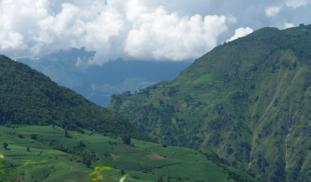Please wait...
About This Project
Independent Scholar
The Mondzish languages are spoken mostly in Wenshan Prefecture, Yunnan Province, southwestern China. These languages are highly endangered and poorly documented, often lacking even basic descriptions. I plan to finish collecting audio recordings and basic word lists for all Mondzish languages. Since most of these languages have fewer than 500 speakers left, and some have only around 50 elderly speakers remaining, research is highly urgent.

Browse Other Projects on Experiment
Related Projects
Using community science to evaluate the intersection of social, racial, and economic injustices in North Birmingham, AL
Environmental injustices differentially impact low wealth communities of color, and this pattern of inequity...
How are rural communities on the edge of the largest tropical peat swamp forest in the Congo Basin using peat resources?
Climate change and human interference threaten to degrade the world’s largest tropical peatland. No detailed...
How has modernization affected the population of rural Yuzawa, Niigata, Japan?
JP / EN To our knowledge, no literature exists that examines the experiences of the people of Yuzawa or...




